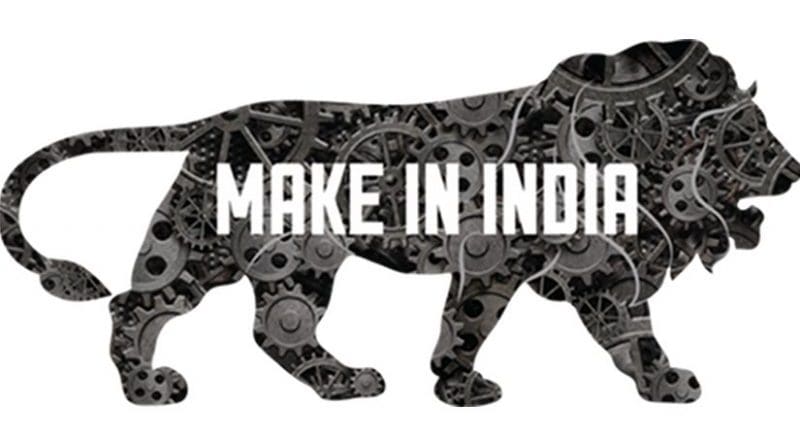Supply Chain Disruption: A New Lease Of Life To Make In India – Analysis
With the outbreak of COVID 19, the future of global supply chain slipped into uncertainty. A number of MNCs, who were thriving in China, the global hub for supply chain, are shifting their manufacturing bases from China and exploring alternative hubs for production. They are diversifying with the main aim for de-risking the supply chain.
Supply chain disruption jolted world growth. Global growth was forecasted to slow down to 3.2 percent in 2022, from 6 percent in 2021 and slip further to 1.3 percent in 2023, according to the IMF ‘s World Economic Outlook,
Paradoxically, global supply chain disruption became a boon to India. It gave a new lease of life to “Make in India”, which was losing stream. Make in India was the flagship scheme of Modi’s development model for manufacturing. On August 15, 2018, the independence day, Prime Minister Narendra Modi was surreptitiously silent on the “Make in India” success story, raising eyebrows over the success. The main aim of Make in India was to uptick the share of manufacturing in GDP from 16-17 percent in 2015 to 22 percent in 2022. Alas! The scheme failed to reach its target.
In what seems to be the reason was the lag in structural policies to recalibrate Indian manufacturing in pursuance of global manufacturing trend. Global manufacturing made a substantial transformation in supply chain manufacturing, in the wake of rising labour costs in the advanced nations. Eventually, global manufacturing witnessed a division in manufacturing. Advanced nations shifted their focus on assembly operation and developing nations leaned towards becoming global workshops.
The turning point for the new spirit to Make in India was evinced, when it was focussed in the 2nd IPEF (Indo-Pacific Economic Framework) for Prosperity Ministerial Meeting at Detroit in May 2023. It reinvigorated the hope while recalibrating the policy framework of Make in India as a pivot for supply chain manufacturing for the IPEF trade block, which consists of 14 nations.
Under the supply chain pillar, partner countries endeavoured to ensure supply chains more resilient, robust and well integrated through crisis mitigation of disruptions.
Many arguments and doubts were thrown against India’s potential for the ambitious vision for new hub for global supply chain. Nevertheless, in contrary to some quarters, it posed a threat to China. According to Hu Shisheng, Director, South Asia Institute, China – Institute for Contemporary Industrial Relation, concerns were raised on India emerging as substitute for the China supply chain. He said, “since past two years Modi government initiated Industrial Substitution for China. There are three major components of Modi government policy. First, introduction of PLI scheme (Production Linked Incentive), second, the global search for China alternatives and third, enhancing free trade agreement routes to topple the burgeoning imports from Chin “.
The decision of Apple of USA, decoupling from China and shifting to India, intensified the threat to China. It triggered concern over China’s hegemony in global supply chain. According to Global Times, a Chinese media, “the Western media have long been hyping up the transfer of production lines by foreign companies such as Apple from China, the global manufacturing center, to countries such as India. Such media reports indicate that India could one day replace China as the world’s largest mobile phone manufacturer”.
Another step, which the global investors adopted to de-risk supply chain disruption , were increasing of local capacity and shifting from just-in-time sourcing ( the Japanese way) to create redundancy in supply chain. Toeing the new approach, Government of India made several attempts to substitute imports through various policy initiatives to increase local capacity. Among them, top priority was given on PLI (Production Linked Intensive) scheme. It provides direct incentive to encourage domestic production through 13 industries.
Another feather to India’s cap, which increases its potential for supply chain hub, is its strong base for digitization. Digital capabilities increases the supply chain network visibility and improve control and coordination , according to a survey by Deloitte. India is the 4th largest nation for digitization in the world.
Vietnam also emerged a potential alternative for China+1 strategy. But , it was not a threat to China. Instead of abandoning China investment, investors were preferring to supplement China operation with low cost manufacturing in Vietnam. According to some Chinese analysts, Vietnam is a complimentary. It is considered an extension of China supply chain, owing to small domestic market and having similar political regime. In contrast, India has a large domestic market and bigger threat to China’s supply chain market. Fears shrouded over China loosing supply chain market in a stiff completion from India.
According to Mr Kyle Freeman, partner and Head of Dezan Shira & Associates, “even prior to the start of the USA-China trade war and more recently the outbreak of COVID 19 pandemic, Vietnam offered the most competitive alternative to China for general manufacturing”.
Though India has not appeared in the limelight as alternative to China, it has several factors to edge out Vietnam. First, it has a bigger domestic market and more skilled workforce than Vietnam, such as in IT operation manufacturing. Second, its wage levels are marginally higher than Vietnam. Third, it is far ahead in digitization than Vietnam. Lastly, political stability and strong democracy in India are ensured by its strong judiciary, which reaffirm India’s strength over Vietnam. Vietnam is ruled by communism and feared to share similar political ideologies as those of China.

